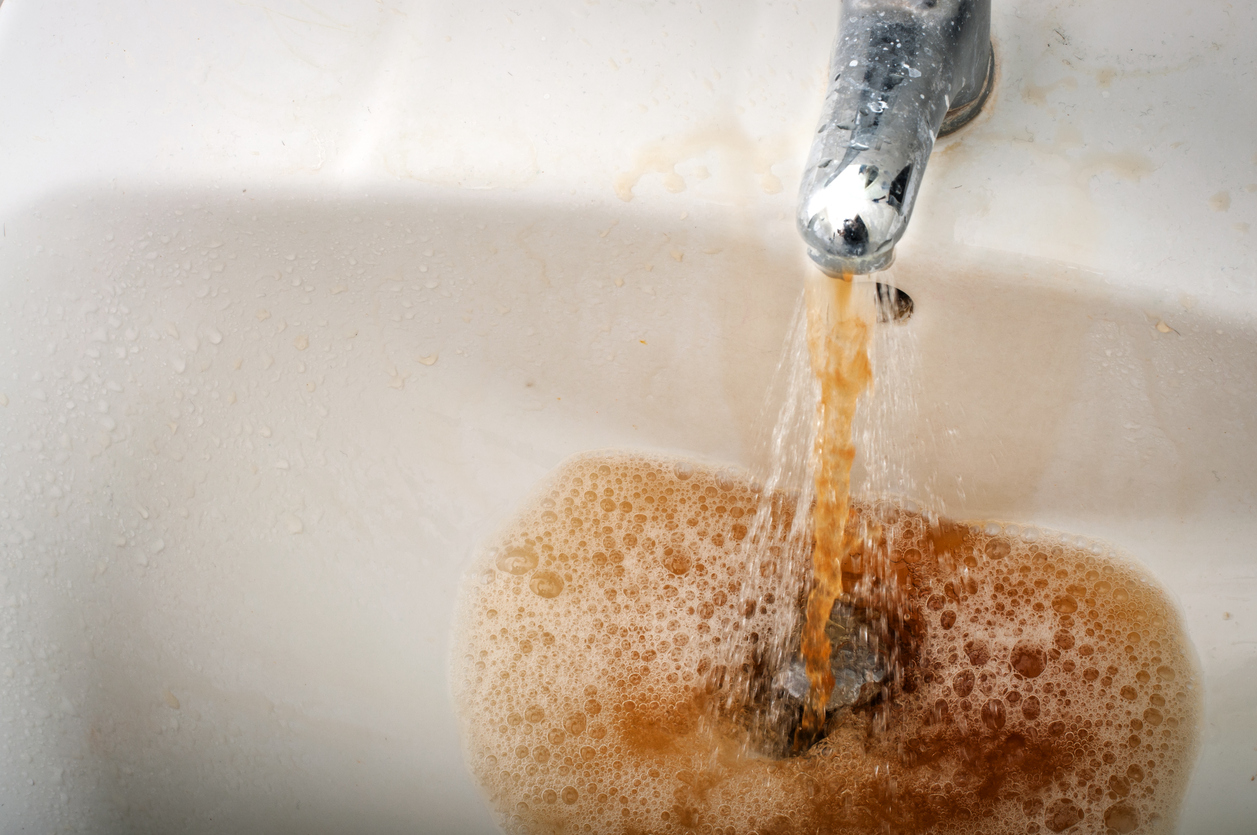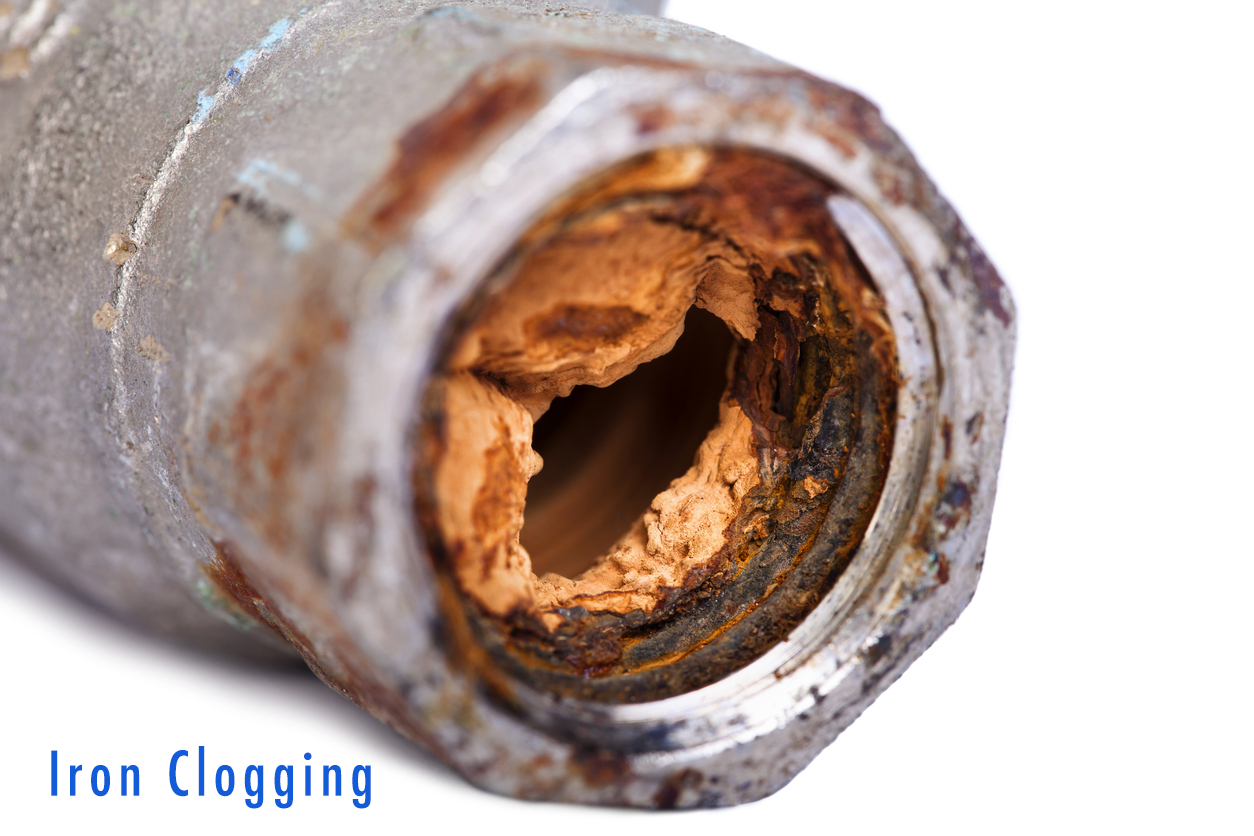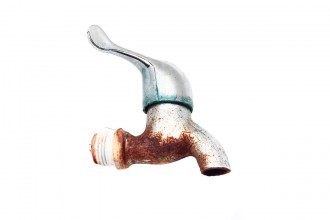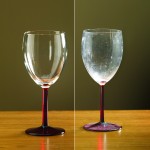Iron in Your Water System
Four Types of Iron – and Common Treatments

Iron (Fe) can drive homeowners crazy with its ability to make its way into a well water supply, affecting everything from the food of taste and drink to stains on clothing and fixtures. Here are the four types of iron found in water supplies, and what you can do about it.
Red Iron
Ferric “insoluble” iron is visible to the naked eye, and can cause a number of issues with your home, as well as in your food and drink.
Red water iron can be removed by a water softener, but a more common treatment is an iron filter, which Culligan offers as a part of its whole home solutions.
The state-of-the-art Iron-Cleer® water conditioning system solves iron and rust staining, leaving you with nothing but clean water in your sinks, fixtures, dishes and clothes.
Clear Iron
Ferrous “soluble” iron is an invisible dissolved solid that can appear after coming out of your faucet. This type of water is low on oxygen and typically comes from deeper wells and groundwater sources.
The most common way to treat clear iron is with a Culligan Water Softener, which can remove clear-water iron through ion exchange, particularly if your water supply has a low pH. Other options, such as chlorination and manganese greensand filtration require maintenance and the proper amount of pressure.
Organic Iron
Generally, organic iron is Fe combined with any dissolved organic matter in the water, such as tannins. A tannin is a biomolecule produced by vegetation that stains liquids, including tea and coffee. When tannins react with water containing iron, it creates a black residue. This usually occurs in shallow wells that are affected by groundwater.
Organic iron can be difficult to treat. Trust your local experts at Culligan to recommend the correct, cost-effective solution to suit your needs.
Iron Bacteria
Iron bacteria are naturally occurring organisms in soils and groundwater that feed off iron, leaving waste deposits. They leave behind a dark sludge that sticks to pipes and fixtures, particularly in your water and toilet tanks and plumbing fixtures. The microorganisms also can lead to bad tasting and odorous water.
You can physically remove the sludge from your toilet tank or use “shock” chlorination methods, but this is merely a temporary solution. The only way to reduce the amount of iron bacteria is to reduce the amount of iron itself. Schedule a FREE water analysis today to find which is the best solution for you.
Iron Can Invade Your Well

Seepage
Groundwater from rain or melted snow travels through the soil to become part of the water supply. If the soil has iron, it can dissolve with the water and work its way into your well.
Corrosion
When iron is exposed to oxygen, it forms rust. Rust flakes can make their way into your water supply from corroded plumbing fixtures such as pipe and casings. This is the main cause of “colored water” you may see coming from your tap, toilet or shower head.
Tip for New Homeowners: If you are a homeowner with a well water system, talk to your neighbor about potential issues his or her well may have given them, and how they have treated these problems. Wells on nearby properties are sometimes a good indicator of the problem water issues you may need to deal with. However, the amount of iron or other minerals, dissolved solids or contaminants.
Health and Wellness: Is Iron Harmful in Your Water?

Iron is a nutrient that all bodies need to function. But it is also bad for your health if ingested in high enough doses.
The EPA considers iron a secondary contaminant, meaning it does not have a direct impact on your health as other dissolved solids such as lead. Because of this, your well water might have a higher amount of iron than the federal standards allow, however, it may not be enough to harm you. It can, however, wreak havoc on your home, causing costly damages and stains.
Harmful Effects of Iron in Your Home

Laundry stains
Yellow, red or brown stains can appear on your clothes if your laundry water contains a high amount of rust bacteria.
Iron can find its way in your water system a number of ways. Rainwater makes its way through the soil and dissolves, seeping into aquifers.
The source could also be within your home through old, corroded plumbing fixtures that typically are found in older well systems. Rust is a natural bi-product of red iron and can flake off of your system’s components. This process is more likely to occur if your water is acidic (lower than 6.5 pH).
Ceramic/Porcelain
Iron can create stains in your sinks, toilets and tubs that are tedious and difficult to remove. Common home remedies include lemons/lemon juice, vinegar and baking soda, but these solutions are temporary and don’t take care of iron at the source.
Clogging
Iron can clog anything from wells and pumps to dishwashers, washing machines and other appliances and accessories. This requires expensive and time-consuming repairs, and sometimes, replacements.
Food and Drink
If you’ve ever noticed a metallic taste in your water, it’s probably from an excess of iron. This offensive taste can ruin a good cup of coffee, tea and other home beverages produced from tap water. Food, particularly vegetables, can also absorb the taste of iron water, causing it to taste different.






